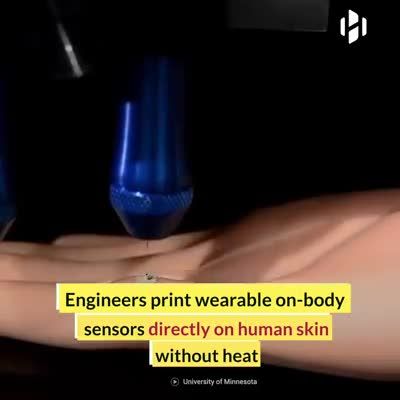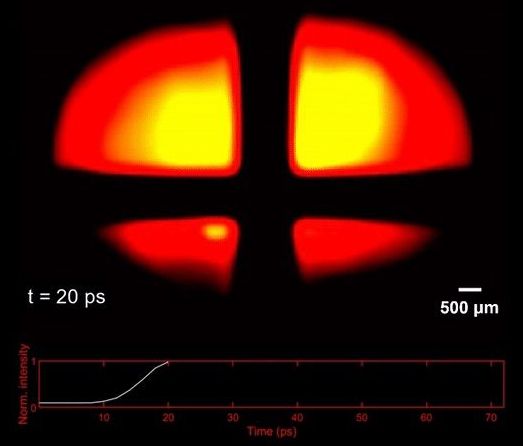The hugely expensive TV will go on sale in select premium electronics stores throughout South Korea.



“The SPEAR flight demonstrator will provide the F/A-18 Super Hornet and carrier strike group with significant improvements in range and survivability against advanced threat defensive systems,” Mercer, the firm’s SPEAR program manager, added.
Very-long-range, high-speed strike weapons could be very valuable for the Navy’s carrier air wings, especially as potential near-peer adversaries, such as China and Russia, continue to develop and field increasingly longer-range and otherwise more capable surface-to-air missile systems and associated radars and other sensors. Aircraft carriers and their associated strike groups and air wings are also increasingly at risk from various anti-access and area-denial capabilities, further underscoring the need for weapons with greater range and that are able to prosecute targets faster to help ensure their survival.
At present, the primary air-launched stand-off anti-ship and land-attack missiles available to them are the AGM-84D Harpoon anti-ship cruise missile, the AGM-84H/K Standoff Land Attack Missile-Expanded Response (SLAM-ER), and the AGM-158C Long Range Anti-Ship Missile (LRASM), all of which are subsonic.


A very high speed camera.
Wang’s newest camera called, which has the wordy moniker “single-shot stereo-polarimetric compressed ultrafast photography” (SP-CUP), builds on previous iterations that were capable of shooting at even faster rates, some of them capable of shooting up to 70 trillion frames per second.
But what the new Caltech camera brings to the table is its ability to perceive the world more like humans can. The human eye’s depth perception relies on there being two of them — and the new rig can pull off the same stereoscopic trick.
“The camera is stereo now,” Wang said in a statement. “We have one lens, but it functions as two halves that provide two views with an offset. Two channels mimic our eyes.”


As drones become better and better at everything they do, it’s only natural photographers and videographers alike start pushing the boundaries of what’s possible. This particular boundary push is not for the faint of heart, however. I’m reasonably new to the drone world. While I’d been keen to dip a toe for a long time, I had been waiting for commercial applications to justify the acquisition. Thankfully, I found a window and jumped right through it.

The blockchain revolution, online gaming and virtual reality are powerful new technologies that promise to change our online experience. After summarizing advances in these hot technologies, we use the collective intelligence of our TechCast Experts to forecast the coming Internet that is likely to emerge from their application.
Here’s what learned:
Security May Arrive About 2027 We found a sharp division of opinion, with roughly half of our experts thinking there is little or no chance that the Internet would become secure — and the other half thinks there is about a 60% probability that blockchain and quantum cryptography will solve the problem at about 2027. After noting the success of Gilder’s previous forecasts, we tend to accept those who agree with Gilder.
Decentralization Likely About 2028–2030 We find some consensus around a 60% Probability and Most Likely Year About 2028–2030. The critical technologies are thought to focus on blockchain, but quantum, AI, biometrics and the Internet of things (IoT) also thought to offer localizing capabilities.
Immersion Highly Likely About 2031–2032 The experts show good agreement on a 70% probability that immersive capabilities will arrive about 2031–2032. They also suggest a variety of technologies will make this possible: blockchain, VR and AR, gaming, AI, IoT and a useful brain-computer interface.
EMERGING INTERNET TECHNOLOGIES
The Blockchain Revolution
George Gilder’s latest book, Life After Google, is a landmark forecast on what he calls the “cryptocosm.” Like his earlier book, Microcosm, which forecast the Information Technology Revolution caused by microchips, followed by Telecosm, which forecast today’s explosion of wireless technology, the cryptocosm extends major advances in blockchain technology into all spheres of the Internet.
Gilder thinks the cryptocosm will produce a web that overthrows the top-down monopolies of Google, Facebook, Amazon and the other tech giants that have created a web that is insecure, clumsy and destined to fail. Using stunning examples of brilliant technological advances by pioneering entrepreneurs, Life After Google promises an Internet that is secure, private, decentralized and controlled by users rather than the tech giants.
In Gilder’s terms:
“Google is hierarchical. Life after Google will be heterarchical. Google is top-down. Life after Google will be bottom-up. Google rules by the insecurity of the lower layers in the stack. A porous stack enables the money and power to be sucked up to the top. In Life after Google, a secure ground state in the individual, registered and timestamped in a digital ledger, will prevent this suction of hierarchical power.”
A telling sign is that China is leading the blockchain revolution. In October of 2019, Premier Xi Jinping called on the nation to “seize the opportunity of blockchain technology as a new security architecture for the Internet.” In April 25, 2020, China launched its national blockchain platform, the Blockchain Service Network (BSN). In time, Xi plans to replace their national currency and other currencies around the globe with new digital systems.
Advanced Gaming
Related breakthroughs are underway as gaming technology becomes vividly immersive, interactive, intelligent and 3 dimensional — creating the famed Metaverse pioneered a
few years ago by Second Life. Nintendo’s Animal Crossing, Facebook’s Horizon, Epic Games’ Fortnite, Minecraft, and other contenders are blazing a path that seems likely to move virtual reality from expensive headsets into everyday life on the web. There were 2.6 billion people playing games globally in 2017, producing revenue of $100 billion.
Jacob Novak, CEO Genvid Technologies, expects the web to become “a mix of game engines, interactivity and video… game engines will be the primary way people will have interfaces with the Internet.”
Travis Scott, a celebrated gamer in Fortnite, thinks “As VR and AR evolve, we’ll be able to build truly immersive virtual worlds.”
Virtual Reality
After years of sluggish growth in VR, we are seeing the convergence of the Internet, high-resolution graphical interfaces, greater computing power, motion sensors, 3D modeling, digital games, and social networking. We also see the rise of augmented reality (AR) – digital information laid over the real-world environment. Experts think these diverse virtual environments will converge into a virtual metaverse. TechCast expects VR to reach mainstream adoption about 2023 + 3/- 1 years and the market will reach about US$550 billion when it hits saturation level about 2030.
VR is also finding its way into business applications. Here’s how Kevin Cardona, head of innovation at BNP Paribas, said it benefits their company: “We are truly convinced that we need to invest in the technology because it will help us to be a company active in 50 countries around the world with clients all over the world.”
Here are other prominent forecasts:
Facebook’s Mark Zuckerberg thinks “Immersive 3D is the obvious next thing after video.”
Heather Bellini, an executive at Goldman Sachs, thinks: “VR and AR will be as transformative as the smartphone.”
Jim Blascovich and Jeremy Bailenson, authors of Infinite Reality, expect a future where “your avatar fills in for you at virtual meetings while you do something more important.”
COLLECTIVE INTELLIGENCE OF TECHCAST EXPERTS
After giving the TechCast experts this background information on leading technologies, we asked them to estimate the prospects for security, decentralization and immersion on the Internet. Results are summarized below.
Security
The most striking feature of our data shows dramatically different views on the prospects for improving security. One group of 8 responses averages less than a 20% probability this will happen, and another group of 9 responses averages more than an 80% probability. A similar bi-modal distribution shows 10 people with an average “most likely year” of about 2027, while another group of 8 averages much later than 2040. The good news is that both groups seem to agree that blockchain and quantum cryptography are the likely technologies to make this happen, with the help of AI.
With such starkly divided opinion, additional insight seems needed to reconcile this impasse. Both cannot be correct. Yes, George Gilder’s claim is hard to accept, but he has been proven correct on similar forecasts. That’s why The Economist called him “America’s foremost technology prophet.”
Here’s how Gilder sums up his forecast in Life After Google: “Some thousands of companies you’ve never heard of are investing billions in that effort [to fix the lack of security on the internet]. Collectively they will give birth to a new network whose most powerful architectural imperative will be security of transactions… So fundamental will security be to this new system that it’s very name will be derived from it. It will be the cryptocosm…”
Marc Andreessen, the billionaire who invented the first web browser, endorsed Gilder’s forecast for blockchain when he told The Washington Post: “This is the big breakthrough. This is the thing we’ve been waiting for… [Gilder] should get the Nobel prize… Hundreds or thousands of applications and companies that could get built on top [of this]…”
Looking over this evidence, we are more impressed by Gilder and his supporters. Our best forecast is that blockchain and quantum cryptography, along with a dash of AI, are likely to introduce a secure form of Internet about 2027. It may also require tougher laws, and it may not be perfect as some glitches are always possible, of course. But TechCast thinks it is coming and long overdue. Serious doubts are normal, of course, but we think the doubts may be what Arthur C. Clarke attributed to “failures of imagination and will.”
Decentralization
The possibility of decentralizing the web into a bottom up system that is no longer dominated by the big tech giants seems more plausible to our respondents. There remains a wide distribution of estimates in the bar charts below, but not a bi-polar distribution. Although many think there is zero probability this will happen, other responses form a fairly normal distribution averaging about 60%. Timing is also less divided, suggesting that these changes are likely to arrive about 2028–2030. The responsible technologies are thought to focus on blockchain, but quantum, AI, biometrics and the Internet of things (IoT) also thought to offer localizing capabilities. I suspect George Gilder would largely agree with this forecast.
The need to decentralize control is gaining some traction. Dfinity is building what it calls the internet computer, a decentralized technology spread across a network of independent data centers that allows software to run anywhere on the internet, rather than in server farms that are increasingly controlled by large firms. It’s planning a public release later this year. However, a free-for-all internet could make it difficult to hold app makers accountable. It could also require a decentralized form of governance which could lead to infighting. It’s not the first to try to remake the internet, so can it succeed where others have failed? Read the full story.
Immersion
Unlike Security and Decentralization, our experts tend to agree on the feasibility of sensory immersion in the Internet. The bar charts show a distribution centered around 70% probability and a most likely year of 2031–2032 when immersion arrives. They also suggest a variety of technologies will make this possible: blockchain, VR and AR, gaming, AI, IoT and a useful brain-computer interface. Gilder would be proud of these results.
Despite pockets of doubt and uncertainty, we think this study tells a compelling story about evolution of the Internet. The continuing advance of computer power, possibly using quantum, nanotech and photonic technologies, is likely to make complex blockchain platforms feasible over the coming decade. Along with applications of quantum crypto and AI, a new generation of Web systems is likely to greatly improve security and move control from tech companies to individuals. Some confusion and security failures will remain, of course, but glitches will be accepted by a younger cohort of users. The development of richer Internet experiences using VR/AR/XR, biometrics, AI, the IoT and holograms is very likely to bloom into the Metaverse long anticipated. Obviously, many other trends will also play important roles in the new Internet, as noted in our experts’ comments.
The strategic implications should be formidable. The status and control of the large tech companies is likely to shift to users, and the Internet service providers (Verizon, Comcast, etc.) may face competition from satellite systems flooding the air with cheap and abundant access. Apple and Elon Musk are launching satellites even now and expect to envelop the Earth with high-capacity broadband in a year or two. In addition to fierce competition from these new sources, the entire supply chain of ICT equipment and services will be disrupted by an advanced generation of suppliers. Users should gain more sophisticated and immersive capabilities that are needed for the high-tech society ahead.
CONCLUSION
This is small study, but TechCast thinks it illustrates the power of using collective intelligence to provide authoritative strategic analyses of hot topics. This study outlines the new Internet architecture that promises to revolutionize life online. The normal doubts are there, of course, but this authoritative analysis strongly indicates that we should see a different Internet emerge during this decade that is secure, decentralized and immersive.

Motion sensors make avatars dance, via Mark Bartkevitch. Some new technologies about holograms you find here: “A Hologram of Anyone Speaking Any Language” (1 year ago): https://www.facebook.com/EngineeringML/videos/848988852139613/?fref=mentions&__xts__%5B0%5D=68.ARBDKew6dZ7QywxQwO8A6gv_CsYKQQSBGcoHM8DsUIltO6tCTDroRVC9IXf4BDS-uFqfAi-ia10ZMiyGm3Pb5pMwtSG3OyyuNldzLw2I7hl6B1vmaQdO_Yru7EnjbXGcprHwnrBYpAUw8eaT43FIg1bR5bFVJfTiX7v8ntaGaSY7-lLD5YX_2BA4q2ng9fviFVhDKCDGRav9pSi6nTeIz3cIJ1GE9guomWoAlECPkv0R84isuVEUDbIBCGxgXj8BCDGkCdfYxRZiSlBrlg9GmytES8KUL81yP37po0XE5jhv0GmbjDfhBoE6cR8uHEzpIfLRKlyIdbtzeAuVpciU0J2H2iI09WxkJL62sg&__tn__=K-R and https://bit.ly/308uV3h.

This latest IoT security warning is hard to believe…
Warnings that our IoT devices might be spying on us are nothing new—remember the smart speaker fiasco last year? But at least we expect those devices to be listening and can exercise some caution. The latest such warning, though, takes these risks to a new level. It turns out that there may be surprising little spies hiding in our living rooms.
Last December, the FBI warned that the perilous state of IoT security means that “hackers can use an innocent device to do a virtual drive-by of your digital life.” A week earlier, that same FBI office had cautioned on the danger that smart TVs can allow “manufacturers, streaming services, and even hackers an open door into your home.”
Now a new security report from the team at Guardicore, issued today, has combined those two FBI alerts, showing just how easy it is to exploit vulnerabilities in our everyday devices. And this isn’t a data theft risk—it’s much more creepy, playing like something from a spy thriller. It’s an attack scenario that “conjures up the famous ‘van parked outside’ scene in every espionage film in recent memory,” Guardicore says.

As tiny particles traveling at the speed of light, it’s going to take a serious machine to capture photons in action, and an international team of researchers have just pieced together one that is very much up for the job. Dubbed the world’s fastest UV camera, the device is capable of capturing ultra-fast events lasting just a picosecond, quick enough to see UV photons fly through the air in real time.
The device is the handiwork of Canada’s Institut National de la Recherche Scientifique (National Institute of Research) and goes by the name of UV-CUP (compressed ultrafast photography). CUP is an emerging imaging technique that has been used to capture ultrafast events at speeds measured in trillions of frames a second, but has so far been limited to visible and near-infrared wavelengths.
“Many phenomena that occur on very short time scales also take place on a very small spatial scale,” says Jinyang Liang, who led the study. “To see them, you need to sense shorter wavelengths. Doing this in the UV or even X-ray ranges is a remarkable step toward this goal.”